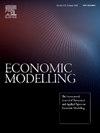高利率和低利率环境下的劳动力市场政策:欧元区的证据
IF 4.2
2区 经济学
Q1 ECONOMICS
引用次数: 0
摘要
在宽松货币政策时期推出的劳动力市场政策与货币紧缩时期推出的政策是否会产生不同的结果?我们利用 11 个欧元区成员国截至 2010 年的数据,并将数据扩展到 17 个国家,直至 2020 年,分析了三种劳动力市场政策:替代率、积极劳动力市场政策(ALMP)支出和就业保护。我们发现,在低利率和高利率环境下,这些政策会带来不同的宏观经济结果。特别是,如果在宽松的货币政策下实施积极劳动力市场政策,则会降低失业率,反之则不会;而在紧缩的货币政策下,较高的就业保护则会带来扩张效应。这些发现突出表明,劳动力市场政策的有效性受到货币政策环境的显著影响,强调了协调政策设计的必要性。在方法论上,我们建议使用 Mallow's Cp 标准对本地预测进行平均化,从而使推论对错误规范和非线性因素具有稳健性。本文章由计算机程序翻译,如有差异,请以英文原文为准。
Labor market policies in high- and low-interest rate environments: Evidence from the euro area
Do labor market policies initiated in periods of loose monetary policy yield different outcomes from those introduced when monetary tightening prevails? Using data from 11 euro-area members up to 2010 – and extending to 17 countries up to 2020 – we analyze three labor market policies: replacement rates, spending on active labor market policies (ALMPs), and employment protection. We find that these policies deliver different macroeconomic outcomes in low- and high-interest rate environments. In particular, ALMPs reduce unemployment if implemented under a loose monetary policy but not otherwise, whereas higher employment protection delivers expansionary effects under a tight monetary policy. These findings highlight that the effectiveness of labor market policies is significantly influenced by the monetary policy environment, emphasizing the need for coordinated policy design. Methodologically, we contribute by proposing to average local projections using Mallow’s criterion, allowing for inferences that are robust to mis-specification and accommodate non-linearities.
求助全文
通过发布文献求助,成功后即可免费获取论文全文。
去求助
来源期刊

Economic Modelling
ECONOMICS-
CiteScore
8.00
自引率
10.60%
发文量
295
期刊介绍:
Economic Modelling fills a major gap in the economics literature, providing a single source of both theoretical and applied papers on economic modelling. The journal prime objective is to provide an international review of the state-of-the-art in economic modelling. Economic Modelling publishes the complete versions of many large-scale models of industrially advanced economies which have been developed for policy analysis. Examples are the Bank of England Model and the US Federal Reserve Board Model which had hitherto been unpublished. As individual models are revised and updated, the journal publishes subsequent papers dealing with these revisions, so keeping its readers as up to date as possible.
 求助内容:
求助内容: 应助结果提醒方式:
应助结果提醒方式:


